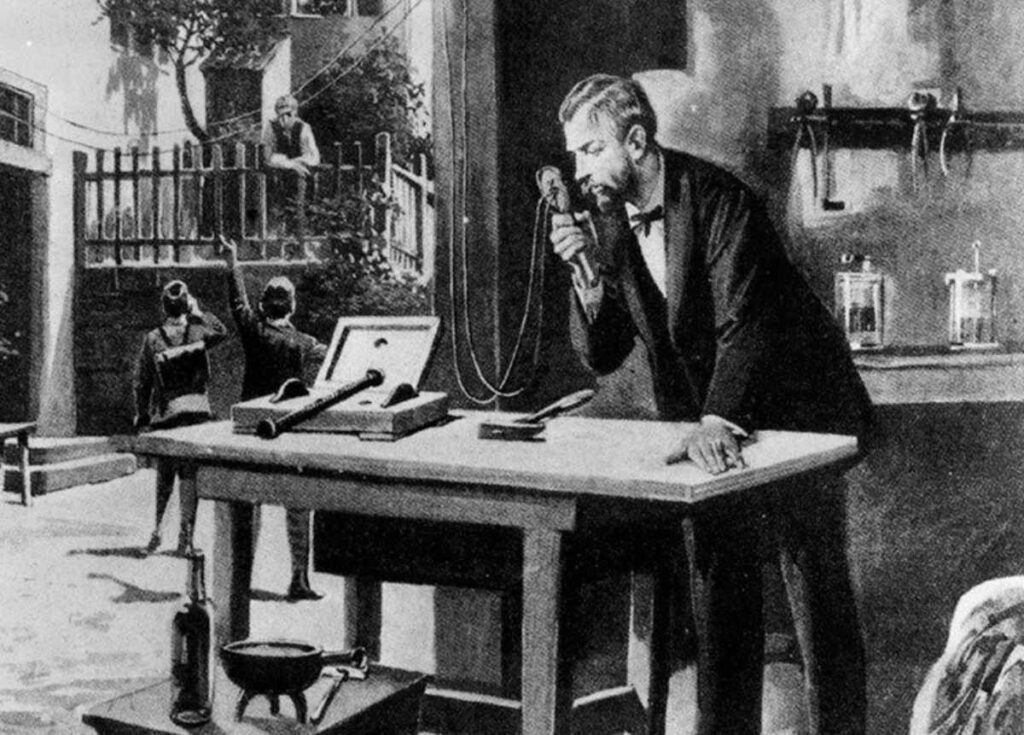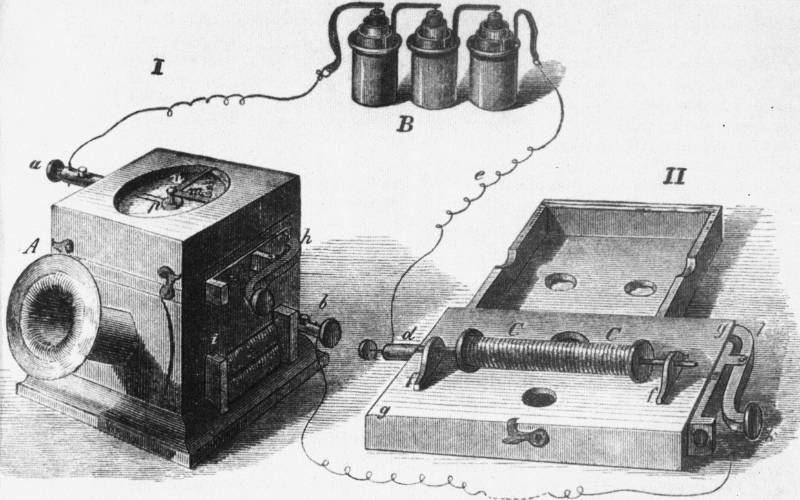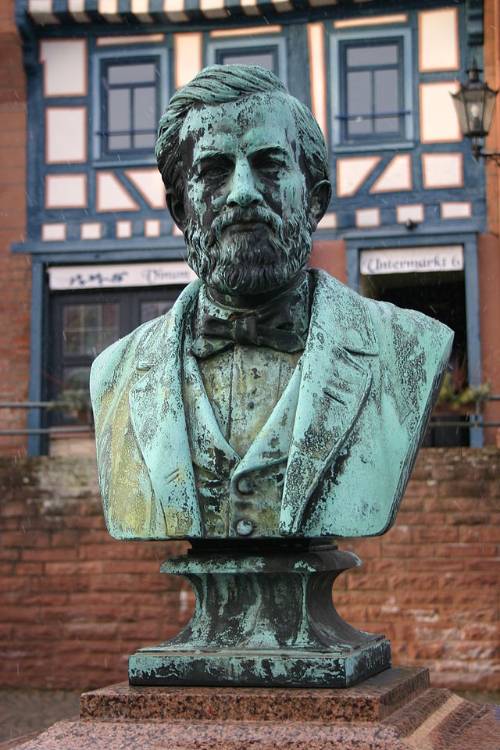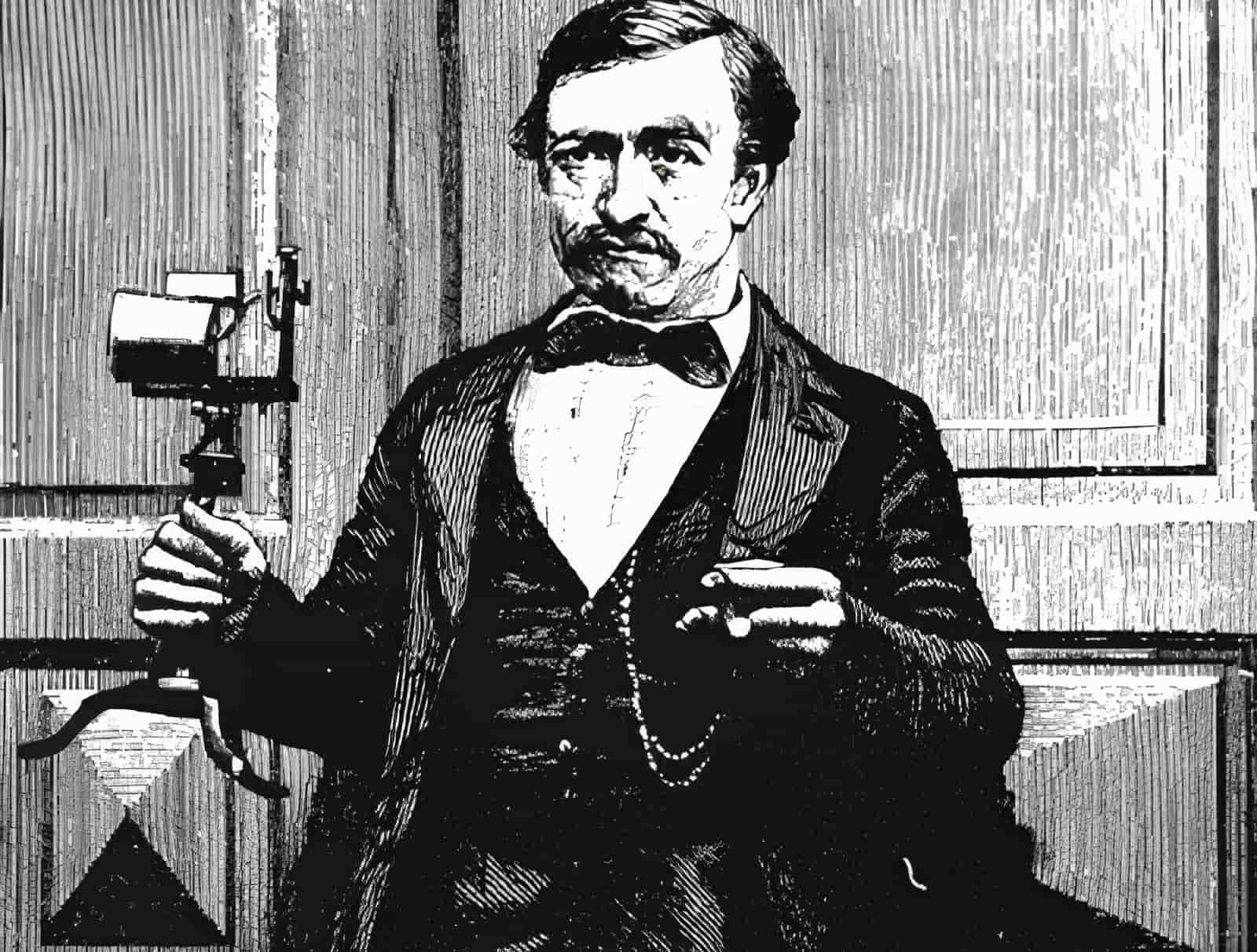What is Johann Philipp Reis known for and how did he become interested in the field of telephony?
Johann Philipp Reis is known for his work in developing an early version of the telephone. He became interested in the field of telephony while studying physics at the University of Gießen in Germany, where he conducted experiments on the transmission of sound over long distances.
What was the design of Johann Philipp Reis’ early version of the telephone?
Johann Philipp Reis’ early version of the telephone consisted of a transmitter that converted sound waves into electrical signals and a receiver that converted the electrical signals back into sound waves. The transmitter and receiver were connected by a wire
What other contributions did Johann Philipp Reis make to the field of physics?
In addition to his work on the telephone, Johann Philipp Reis made important contributions to the study of optics and electricity. He developed a device called a spectroscope, which is used to analyze the spectra of light emitted by different sources, and he conducted experiments on the electrical conduction of gases.
What was Johann Philipp Reis’ contribution to the invention of the telephone?
Johann Philipp Reis is widely credited with inventing the first practical telephone in 1861. His device used a membrane to convert sound waves into electrical impulses, which were transmitted along a wire to a receiver. Although Reis’ telephone was limited in range and quality, it represented a significant breakthrough in telecommunications technology.
How did the legacy of Johann Philipp Reis influence inventors and innovators in telecommunications?
Although Johann Philipp Reis’ work on the telephone was initially overshadowed by the success of Alexander Graham Bell and other inventors, his legacy has been recognized by later historians and researchers. Reis’ innovative approach to the problem of transmitting speech over long distances inspired later inventors to experiment with new materials and designs for telephones and microphones. His example also demonstrated the importance of persistence and independent thinking in scientific research.
A self-taught scientist and inventor, Philipp Reis was sitting in his living room in the autumn of 1861 in Friedrichsdorf, a small German village. He was demonstrating a technology that could send noises and the human voice across a distance to an attentive audience. Reis had his brother-in-law operate the machine as his assistant after running a lengthy cable from the living room over the plum tree in the backyard into a barn.
The first recorded telephone conversation in history was about to be seen by the audience in the living room. Reis (1834–1874), a physics instructor who loved to dabble with models for classroom teachings in his leisure time, had demonstrated the equipment to his coworkers a year earlier; he named it the “telephone.” However, it still had a significant flaw at the time: while sounds and melodies could be communicated, human speech could not.

The Predecessor of the Telephone Was Created by a Physics Instructor
Reis aimed to imitate the functioning of the human ear with his creation. He wrapped a piece of natural gut over a sound funnel to create his prototypes. Reis had a platinum strip, also known as the ossicle, that was wired into an electrical circuit connecting to this specific kind of eardrum. Sound waves caused the membrane to vibrate, and this movement was sent into the circuit by the platinum plate.
A copper wire coil with a knitting needle connected was on the opposite end. The knitting needle moved as a result of the coil’s fluctuating magnetic field, which transmitted the sound signal. However, Reis’ “talking knitting needle” was fairly quiet, so the signal had to be boosted. A friend who teaches music was able to address this issue. The musician had his violin with him when he paid a visit to Reis. And the violin turned out to be a fantastic soundbox when the two professors put the knitting needle on the instrument.
“The Horse Does Not Eat Cucumber Salad”

Reis worked nonstop to enhance the “telephone’s” signal transmission. He worked on other prototypes in the little barn behind his house whenever he had free time. Reis selected a rabbit’s bladder as the drumhead and a tiny wooden box as the amplifier for the performance in his living room in 1861. Reis and his guests sat transfixed in front of the receiver in the living room while his brother-in-law read from a book in the barn. The inventor clutched the phone to his ear and repeated what he heard.
However, the crowd didn’t change their skepticism. For them, everything could be a prank. The acquaintance entered the stable and spoke the fabled words, “The horse does not eat cucumber salad.” On the other end of the line, a little agitated, Philipp Reis just answered, “The horse eats.”
These remarks have since been recognized as the first recorded phrases communicated over a telephone. The second nonsensical sentence that came from the music instructor was, “The sun is made of copper.” Reis was able to demonstrate that human speech could also be conveyed, even though he heard it as “sugar” rather than “copper.”
Philipp Reis Hadn’t Have Any Success or Recognition

Reis was encouraged by his achievements to demonstrate his equipment to the public on many occasions, beginning in 1862. He also had some prototypes constructed, which he sold and utilized as display pieces for science. Reis’ prototypes are now regarded as the telephone’s forerunners. In Edinburgh, Scotland, Alexander Graham Bell (1847–1922) also got his hands on one of these prototypes. He eventually received the telephone’s patent and helped popularize the new technology across the world.
The brass gadgets were popular among specialists, but the major development took a while. Reis abandoned the concept towards the end of the 1860s and committed himself to other experiments as it became clear that the invention would not be financially successful. At age 40, tuberculosis ultimately claimed his life. He didn’t live to see how well his idea worked or how important it was as one of the most important technologies of the 20th century.
The Valiant Pursuit of A Patent
Alexander Graham Bell, an immigrant from Scotland, applied for the telephone’s patent in the USA two years after Philip Reis passed away. Bell established the framework of the biggest telecom firm in the world. But shortly after, hundreds of lawsuits against this Bell Telephone Company and years of patent litigation followed it. For instance, the businessman Elisha Gray (1835–1901) leveled grave criticism against Bell. Gray had submitted his patent for the telephone only two hours after Bell. But just like another telephone inventor, Italian immigrant Antonio Meucci, Gray was unsuccessful in court in claiming a right as the inventor of the telephone (1808–1889).
Meucci worked independently of Reis on the direct audio transmission. He is credited with giving the first public demonstration of his “telettrofono” as early as 1860. He submitted his creation to the American Patent Office in 1871. He had just applied for a patent reservation, which required yearly renewal. His release of the renewal in 1874 made room for Alexander Graham Bell to claim his telephone patent. Meucci filed a lawsuit as well, but passed away in 1889 before the matter was resolved.
It is undeniable that Bell did not develop the telephone alone; rather, he was a savvy salesman who benefited from several of the early telephone pioneers’ innovations. One of them was Philipp Reis, who invented a concept in his barn that transformed the way of communication.


